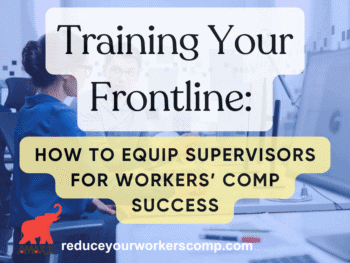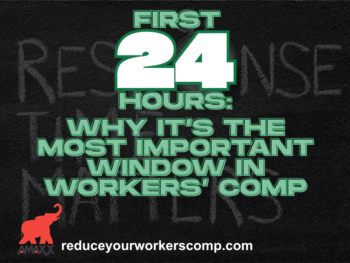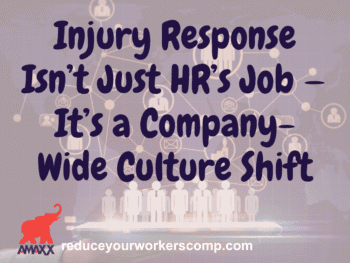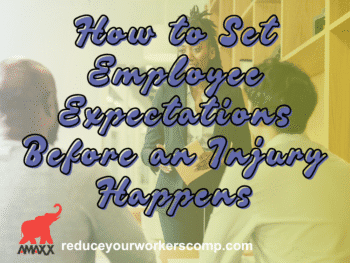
Communicate often, have realistic expectations, and be flexible. Those three strategies can help organizations protect their workers and companies as they begin to reopen. Many states are lifting restrictions that were imposed to prevent the spread of the coronavirus. While this is good news for employers, proper preparation and care must be taken to prevent major virus outbreaks and additional business disruptions.
With so many employees working from home during the initial weeks of the pandemic, many are not sure what to expect in the coming weeks and months. They may be concerned about if and when they will be returning to their normal worksites and whether they even have jobs awaiting them.
Employers that have been consistently communicating with their workers are in the best position to ensure a smoother transition than those who have not. In fact, recent research indicates some employees who have not had regular contact with their supervisors and leaders are already planning to leave their companies when the opportunity arises. What workers need now is honest and transparent information. Employers should let their workers know about any plans for having some or all of them return to work and how that will play out.
The reality is that the majority of employers have not made specific plans for returning their employees and are waiting on federal, state, and especially local governments to provide guidance. In the meantime, they can begin to consider basic strategies to reopen
Click Link to Access Free PDF Download
“9-Element Blueprint To Create Your Workers’ Comp Employee Brochure”
Prevent Infections
Social distancing, personal protective equipment, and screening workers before entering the worksite are among the options to consider. But there are varying degrees and methods to accomplish each, and every organization should consider its own uniqueness in designing return-to-work plans.
Among the issues to look at are:
- Improved hygiene. Providing hand sanitizer and/or disinfecting wipes goes a long way to prevent the spread of the virus, especially in areas and on surfaces touched by multiple employees, vendors, and customers.
- Face masks are highly recommended, especially now when the risk of infection is still extremely prevalent. While that may not be possible for workers in certain positions, employers should consider them where possible. Cloth coverings are generally acceptable for most industries. Gloves are another consideration, along with coverings for clothing.
- Social distancing. Some workspaces are more conducive to allow for 6 feet between workers and others. A number of organizations have indicated they will make substantial reconfigurations to allow for social distancing, especially restaurants and retail establishments. Where this is not practical, companies can take precautions such as:
- Staggered shifts
- Having some workers return and some work remotely
- Closing areas where large numbers of workers are likely to congregate, such as break rooms
- Reducing the number of people allowed in conference rooms at any one time
- Test employees and others. At the very least, temperature screenings can effectively identify those who may have the virus and prevent them from entering. A forehead thermometer involves no actual physical contact.
- Contact tracing. If someone at the workplace becomes infected, employers should try to identify anyone who may have had recent close contact with the person and suggest they be tested.
Reduce Expectations
Much has changed during the pandemic, especially the home lives of workers. The following are among the situations that employers may encounter.
- Child care needs. Many employees working remotely now find they must care for others, such as children whose schools and daycare centers are closed. Some of these workers may not be able to return to their worksites just yet, or not every day. They may need to juggle responsibilities with their spouses. Employers can help by being flexible to arrangements such as allowing a worker to stay home for several days a week, while the person’s spouse stays at home the other days.
- Leave requests. Organizations will likely see more workers taking advantage of various paid leave programs, whether through a government or the company itself.
- Less than optimal output. Productivity levels will likely be less than they were before the pandemic. Workers, concerned about their families, their jobs, and their health may be easily distracted and not 100 percent focused on the job at hand. Employers should show support and understanding. While a complete lack of attention to work is unacceptable, leaders should expect that not every worker will be up to his full potential and try to work with employees to help where possible.
Listening to employees at this time is key to keeping them safe and protecting the company from unwanted lawsuits or other actions. Several major retailers have recently seen sick-outs among workers who say their companies have not adequately protected them.
For example, where a company may provide face masks to employees, they may not require all employees or customers to wear them, exposing the workers to risk. Some organizations have been accused by their employees of failing to communicate with them about workers or others who may have tested positive for the virus, or neglected to fully clean areas of frequent touch.
Some workers have complained their employers don’t provide hand sanitizer or a place to wash their hands frequently.
Summary
These are unprecedented times for organizations. People are scared and seeking to find answers and hold on to the things that are most important to them. Employers can ease the burdens on their workers and their companies by proactively addressing the next phase of the pandemic and working in concert with their employees.

Contact: mstack@reduceyourworkerscomp.com.
Workers’ Comp Roundup Blog: https://blog.reduceyourworkerscomp.com/
©2020 Amaxx LLC. All rights reserved under International Copyright Law.
Do not use this information without independent verification. All state laws vary. You should consult with your insurance broker, attorney, or qualified professional.

















